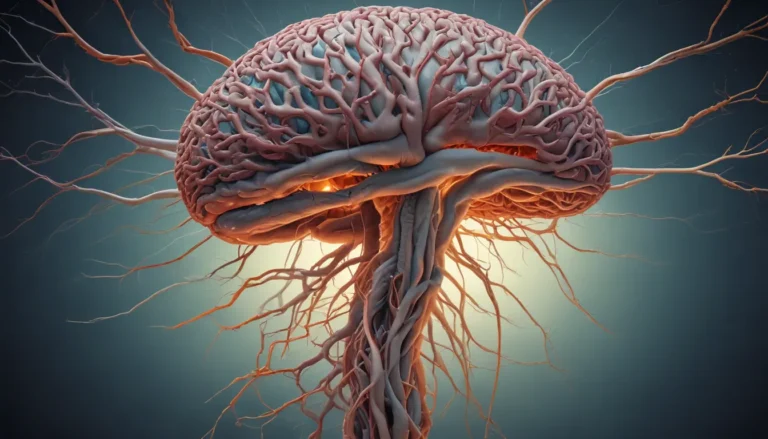A Note About Images: The images used in our articles are for illustration purposes only and may not exactly match the content. They are meant to engage readers, but the text should be relied upon for accurate information.
Genome sequencing is a groundbreaking scientific advancement that has reshaped the landscape of biology. By unraveling the complete DNA blueprint of an organism, researchers can delve deeper into its genetic composition, unveiling a wealth of information about its traits, diseases, and evolutionary history. Over the years, genome sequencing has become more accessible and affordable, leading to a myriad of new discoveries across various fields of study.
In this article, we will delve into 14 remarkable facts about genome sequencing that underscore its importance and influence on the scientific community. From decoding the human genome to shedding light on ancient organisms, these facts will not only captivate your interest but also showcase the transformative power of this technology in advancing our understanding of life and the natural world. So, prepare to embark on a journey through the intriguing realm of genome sequencing!
Decoding the Genetic Mysteries: A Closer Look at Genome Sequencing
-
Genome sequencing like a Genetic Detective: Genome sequencing serves as a genetic detective, unveiling clues about our health, ancestry, and aiding in solving crimes. It’s a potent tool that empowers researchers to uncover the secrets hidden within our genetic code.
-
Genome sequencing as a Genetic Superhero: Just like a genetic superhero, genome sequencing revolutionizes medicine and agriculture. It fights diseases, enhances crop quality, and contributes to the conservation of endangered species. This technology holds immense promise in shaping the future of scientific exploration.
Unveiling the Wonders of Genome Sequencing
-
The Human Genome Project Milestone: The monumental accomplishment of completing the Human Genome Project in 2003 marked a significant milestone in genetic research. This international endeavor provided scientists with a comprehensive roadmap of the human genetic blueprint, paving the way for groundbreaking discoveries in medicine and biology.
-
Identifying Genetic Diseases: By scrutinizing an individual’s genomic sequence, scientists can pinpoint genetic abnormalities that may predispose them to specific diseases. This knowledge enables early detection, personalized treatment strategies, and informed decision-making regarding one’s health.
-
Speedy Sequencing: With advancements in technology, the time required to sequence a human genome has drastically decreased. Modern sequencing techniques have streamlined the process, reducing the timeframe to approximately 8 hours, a remarkable improvement from the years it initially took.
-
Evolutionary Insights: Comparing the genomes of diverse species offers profound insights into evolutionary relationships and the mechanisms driving life’s diversity. Genome sequencing has been instrumental in unraveling the genetic changes that have shaped life on Earth over millions of years.
-
Revolutionizing Cancer Research: Genome sequencing has transformed cancer research by identifying genetic mutations that fuel the development of various cancers. This knowledge has paved the way for targeted therapies, enhancing treatment options and improving patient outcomes.
-
Cost Evolution: The cost of genome sequencing has plummeted since the completion of the Human Genome Project. Initially exorbitant, it now amounts to just a few thousand dollars to sequence an individual’s entire genome, making it more accessible for research and clinical applications.
-
The Human Genome Blueprint: The human genome comprises approximately 3 billion base pairs, serving as the informational reservoir for bodily functions, traits, and diseases. This vast genetic dataset offers a blueprint of human complexity and diversity.
-
Forensic Applications: Genome sequencing is a formidable tool in forensic science, aiding in solving cold cases and identifying perpetrators of crimes. By analyzing DNA samples, forensic experts can uncover crucial information to bring closure to unsolved mysteries.
-
Personalized Medicine Potential: Armed with an individual’s genomic data, healthcare providers can tailor treatment plans to suit their specific needs. This personalized approach holds immense promise in optimizing healthcare outcomes and minimizing adverse reactions.
-
Tracing Ancestry: Through genome sequencing, scientists can trace an individual’s ancestry and reveal migration patterns throughout history. This genomic archaeology provides profound insights into human origins and population movements across the globe.
-
Marbled Lungfish Genome Magnitude: The marbled lungfish boasts the largest sequenced genome among all organisms, with approximately 130 billion base pairs. This colossal genetic map sheds light on the intricacies of genetic diversity and evolution in the animal kingdom.
-
Agricultural Advancements: Genome sequencing is revolutionizing agriculture by identifying desirable traits in crops and livestock, improving productivity, and enhancing food security. This technology holds immense potential in shaping sustainable agricultural practices.
-
Species Conservation Support: Genome sequencing plays a pivotal role in conservation efforts by analyzing the genetic makeup of endangered species. By understanding genetic diversity and adaptability, scientists can devise effective conservation strategies to safeguard vulnerable populations.
Unraveling the Potential of Genome Sequencing
Genome sequencing has unleashed a new era in biological exploration, offering unprecedented insights into our genetic intricacies. From unraveling the mysteries of diseases to enhancing agriculture and conservation efforts, this technology stands at the forefront of scientific innovation. The 14 astounding facts outlined above underscore the transformative capabilities of genome sequencing, opening up a realm of possibilities in personalized medicine, evolutionary studies, and beyond.
As technology advances and sequencing costs decline, we anticipate a wave of new breakthroughs on the horizon. Genome sequencing has the power to redefine healthcare, agricultural practices, and conservation initiatives, ushering in a brighter and more sustainable future. As we continue to decipher the enigmatic language of our DNA, we pave the way for a world enriched with knowledge and innovation.
Frequently Asked Questions on Genome Sequencing
- What is genome sequencing?
-
Genome sequencing involves mapping out the complete genetic information of an organism, deciphering the sequence of DNA building blocks that compose its genetic code.
-
Why is genome sequencing important?
-
Genome sequencing provides crucial insights into an organism’s genetics, offering a deeper understanding of its biology, evolution, and potential health implications across various fields of research.
-
How much does genome sequencing cost?
-
The cost of genome sequencing has significantly decreased, ranging from a few hundred to a few thousand dollars based on the depth and accuracy of the sequencing required.
-
What are the benefits of genome sequencing?
-
Genome sequencing enables disease identification, personalized therapies, infectious disease research, evolutionary studies, and enhanced crop breeding programs, among other applications.
-
Are there ethical implications of genome sequencing?
-
Genome sequencing raises ethical concerns related to privacy, consent, discrimination, and responsible use of genetic information. Establishing guidelines and regulations is crucial to ensure ethical genomic practices.
-
Can genome sequencing predict future health outcomes?
-
While genome sequencing can reveal genetic predispositions, predicting future health outcomes accurately is challenging due to the complexities of genetic interactions with environmental and lifestyle factors.
-
Can genome sequencing be used for cloning individuals?
-
Genome sequencing alone does not enable individual cloning, as cloning involves intricate procedures beyond the scope of sequencing technologies.
-
Is genome sequencing limited to humans?
-
Genome sequencing can be performed on any organism with DNA, including plants, animals, and microorganisms, showcasing its versatility across diverse biological research domains.
-
How accurate is genome sequencing?
- Modern genome sequencing technologies boast high accuracy levels, with error rates as low as one in a million base pairs. Ongoing refinements in sequencing methods aim to further enhance accuracy.
Embark on a Journey of Genetic Discovery
Genome sequencing continues to captivate with its unparalleled revelations about our genetic composition. As you explore its impact on disease identification, evolution, cancer research, and personalized medicine, your curiosity about the microscopic world might be piqued. Why not venture into the captivating realm of virology techniques next? Discover the ingenious methods scientists employ to study viruses and develop life-saving treatments that redefine the boundaries of scientific advancement.
Your Feedback Matters
At the core of our commitment to delivering enriching and reliable content lies your feedback. Every fact on our platform is contributed by individuals like you, fostering a diverse pool of insights and knowledge. Our dedicated editors rigorously review each submission to ensure utmost accuracy and credibility. Trust in our unwavering dedication to quality as you embark on a journey of discovery and learning with us.






